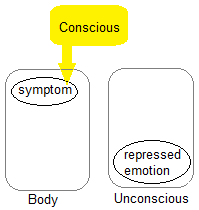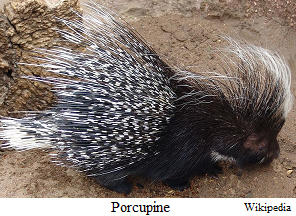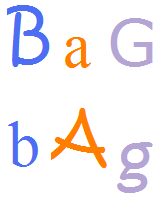The Kuriki method (the first edition in 2007) is a theory about Tourette’s syndrome (tic disorder) and obsessive-compulsive disorder to cure these diseases without medication. This theory is based on the author’s inference and interpretation regarding the structure of these diseases. Since it has been written for the psychoanalysts, reading will be difficult for people in general and it might be sometimes read erroneously. Therefore the Kuriki method must presuppose that the patient is treated by a nearby psychoanalyst, and that, between the patient and the Kuriki method, there is always the psychoanalyst. The explosion of emotional catharsis, which has strong repercussions, is done only for three seconds, once a week: beyond this rhythm, it would be an accident caused by negligence, and the psychoanalyst who is inexperienced in emotional catharsis must take responsibility for the temporary mental collapse caused by the accident. Also, to the patient who has weak capacity of logical reasoning, the psychoanalyst must explain well on the violent emotion of revenge caused by the illusory confusion between the person of the traumatic image in his head and the person in the real world.
Cure for Tourette’s syndrome (tic disorder) and OCD without medication
§42

Pathological intentionality of the Conscious
The Kuriki method does not exceed the scope of a theory to heal tic disorder and Obsessive–compulsive disorder. The theory of the bodily repression of bodily sensations in the KV and the repression of the mass of emotion by the presence of the KV is a theory of the treatment of tic disorder and obsessive-compulsive disorder. The author cannot say that every kind of neurosis has a KV in its structure. The application of the Kuriki method to neurosis in general is only a question. For example, it’s not completely impossible for anorexia. Anorexia cannot be a rationalization (i. e., arbitrary selection of a means of repression)? It is not possible that the refusal of food has no relationship with the content of the trauma? It is not for the repression of a traumatic judgment that an anorexia is put in foreground in the Conscious? “It’s good to be skinny” is the legitimacy that the rationalization uses in order to pass the Super-ego? The Unconscious uses this effect of the Libido for the repression of a traumatic judgment? As patients with Tourette’s syndrome are forced to do tic movements, people with anorexia are forced to refuse food? “Repression is done by the priority of something else in the association. The possibility of justification determines the symptom. So the symptom is not related to the trauma in signification.” This is the idea of the rationalization. Symptom are not results of repression, but a means of repression. If the Unconscious uses the priority of an idea such as “Cutting the nails, it’s clean.”, in order to continue to repress a traumatic judgment, it will be a nail-biting (Impulses control disorder). If it is an idea such as ; “Being thin is more beautiful”, the legitimacy for priority can be mortal. Rationalization is done with the facility to justify the legitimacy under the robotic Super-ego, unrelated to the content of the trauma. This rationalization will be the symptom. It would be a rejection of Freudian way of trauma research.
Congenital predisposition
The symptoms of tic disorder and the symptoms of obsessive-compulsive disorder are bodily means of the repression of disagreeable bodily sensations. These symptoms are mechanisms of the upper layer of neurosis, KV, and the presence of this upper layer represses the lower layer. The lower layer is the existence of a mass of emotion, which is a product of the repression of the disagreeables judgment of the trauma. The content of the mass of emotion is not congenital, and it is possible to reduce the mass by catharsis: neurotic symptoms will disappear and neurosis will be healed. However, the tendency of very strong repression is not a neurosis, but an innate tendency of the patient.
ADHD (attention deficit hyperactivity disorder)
ADHD is not a neurosis, and is not included in the autistic spectrum either. The repression is the repression of disagreeable judgments and the repression of disagreeable bodily sensations, and the repression works with the mechanism with the deviation of objects of the Conscious. The deviation of objects of the Conscious; it means that another object will be the new object of the intentionality of the Conscious. In ADHD, the deficit of attention is a concentration of intentionality, which is focused on another object. The healthy Conscious is a distracted Conscious; various objects are constantly coming in and going out. The intentionality of the Conscious of the patient with ADHD is very strong, and in the concentration on an object of consciousness, other objects of the Conscious are eliminated. First of all, the Conscious is a function of intentionality. The Conscious concentrates on a point of intentionality. In the strong tendency of repression, namely, in the strong tendency of intentionality, the object of the Conscious concentrates on a point. The attention deficit of ADHD, it is indeed that the intentionality of the Conscious is congenitally strong. ADHD is a strong concentration of the field of view of the Conscious, and at the time of a changing of objects of the intentionality, the previous object will be completely repressed, like the content of a forgotten dream.
Tic disorder and lost child
In addition to the relationship between Tourette’s syndrome, obsessive-compulsive disorder and autistic spectrum, the relationship between Tourette’s syndrome, obsessive-compulsive disorder and ADHD (attention-deficit hyperactivity disorder) is also a well-known fact. There is no mystery that children with tic disorder often get lost.
A speculation of the author on the ASMR
The description of the relationship between Tourette syndrome, color blindness and ADHD requires statistical data. Also, the statistical data on autism spectrum disorders (Asperger syndrome, for example) and ASMR are
necessary. A theory without data is just only a speculation and it may be a mistake, but the author cannot wait for the official statistical analysis for a hundred years. The percentage of the population of the people who have perception of the sensation of ASMR is not known. There is no data on the statistical relationship between Tourette syndrome and ASMR. The author considers that ASMR is an indirect social grooming. What is opposite to the indirect social grooming is the goosebumps. “Indirect” means there is no direct cutaneous contact between two persons. There is always a thing between two persons, and the sound is the sound of this thing. Otherwise, as the sounds of indirect contacts between two persons, there are whisper sound, mouth sound, etc. For the sensation of these indirect social groomings, the sentimental element is not the question, and ASMR might be an very intelligent case in the autistic spectrum. The acts of ASMR are slow positive acts, such as organize, create, embellish, repair. The rapid negative acts can not be a trigger; such as putting things in disarray, breaking things, etc. ¤The author makes a speculation that the trauma that is the cause of neurosis such as tic disorder or obsessive-compulsive disorder is often a direct cutaneous contact. In this case, the patients with Tourette’s have a high probability of the perception of the sensation of ASMR.

This diagram is not based on statistical data. It is a pure imagination of the author to show intersections and to avoid misunderstandings, such as; “All the people with ASMR are Asperger.” While OCD and Tourette’s are diseases, ADHD, Asperger, synesthesia, daltonism and ASMR are not diseases. Moreover, there are numerous individual differences.
The high level of intelligence of those who can perceive the ASMR sensation is obvious. If it is like Asperger, their intelligence is transcendent in some genres, without boundary line between joke and serious, may limit the communications. There is no necessity of personal communication with real persons.
The cutaneous sensation of «the compulsive physical sensation» of OCD might have something with the arrector pili muscles for goose bumps.

Synesthesia
ASMR is a very special type of synesthesia, because the sensation of ASMR is not one of the five senses. While, in the ordinary senses, the blackboard scraping sound has no meaning and gives directly an unpleasant sensation, for the people with ASMR, the trigger has a meaning and gives a pleasant sensation of indirect social grooming.

Tic disorder in comparison with ADHD, Asperger, ASMR, and synesthesia.
The constitutive elements of tic disorder
· Bodily mechanism of repression (KV)
· Sensation of a muscular contraction without real muscular contraction (the « compulsive intramuscular sensation » of tic disorder)
· Absolute Compulsion between the « compulsive intramuscular sensation » and tic movement. (The Absolute Compulsion is not a perceptible sensation. The patient perceives the amplification, or “build-up”, of the « compulsive intramuscular sensation ».)
· Hermetic state of the repression of the traumatic emotion.
· Variation of movements of tic (rationalization in tic disorder).
